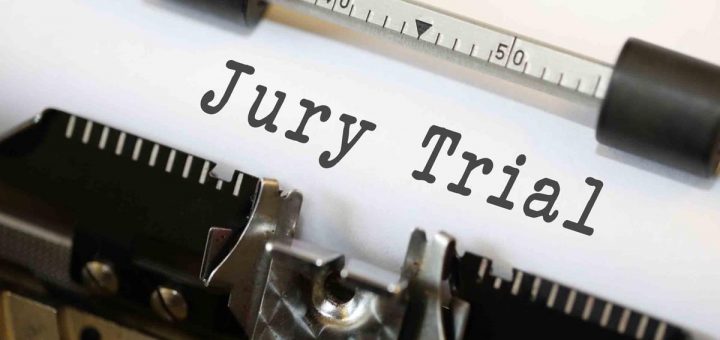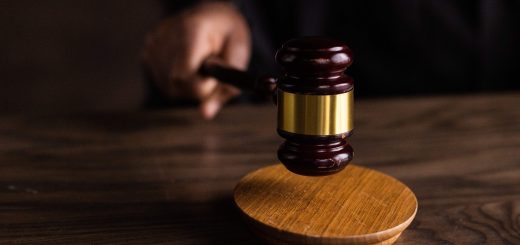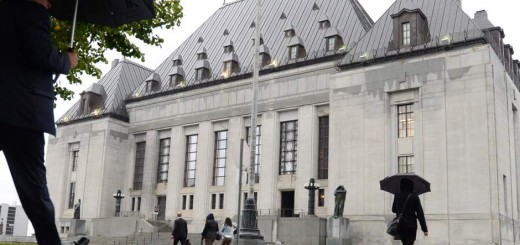The Abolition of Peremptory Challenges in R v Chouhan: A License for Discrimination or Safeguard for Representative Juries?

In early October, the Supreme Court of Canada (“SCC” or “The Court”) heard submissions in R v Chouhan (Docket Number 39062, Heard on 7 October 2020) [Chouhan] on the constitutionality of the federal government’s abolition of peremptory challenges for jury empanelment under the Criminal Code, RSC 1985 c C-46 [Code]. While the Court orally rendered its decision on the day of the hearing, with the majority finding that the elimination of peremptory challenges from the Code is constitutional, it has yet to release its written reasons.
The written and oral submissions of the many interveners in Chouhan exposed the divisive debate over Parliament’s abolition of peremptory challenges from the Code. On one side, those in favour of abolition contended that peremptory challenges had historically been used for discriminatory purposes by keeping racialized and Indigenous people off of juries, especially where the victim is a racialized or Indigenous person. On the other side, those in favour of maintaining peremptory challenges argued that they are an important tool for the accused—particularly racialized and Indigenous accused—to eliminate biased jurors from the panel and thus obtain the benefit of an impartial trial by jury as protected under ss. 11(d) and 11(f) of the Canadian Charter of Rights and Freedoms [Charter].
This comment looks at the nature of the submissions made by the parties in Chouhan, particularly those of the interveners representing advocacy and equity-seeking groups, regarding the constitutionality and significance of the abolition of peremptory challenges. In doing so, it highlights the key tensions at play in this case and considers whether a balance between the competing arguments for the constitutionality of peremptory challenges can in fact be struck.
Background
Mr. Pardeep Chouhan was charged with first-degree murder on September 30, 2016. His trial was scheduled for September 16, 2019, and his jury selection was to begin on September 19, 2019, the same day that Bill C-75, An Act to amend the Criminal Code, the Youth Criminal Justice Acts and to make consequential amendments to other Acts, SC 2019 c 25 [Bill C-75] came into force. Prior to Bill C-75’s enactment, the accused and the Crown could each peremptorily challenge up to twenty prospective jurors pursuant to s. 634(1) of the Code. In other words, the accused and the Crown could reject potential jurors from serving without providing any reasons. The new legislation repealed this provision, and instead reinforced trial judges’ powers to determine a challenge for cause whereby potential jurors could be excluded from serving if the Crown or the accused has shown that a juror is not impartial under ss. 638(1)(b) and 640(1) of the Code. Additionally, Bill C-75 amended s. 633 of the Code to allow a trial judge to have a prospective juror “stand by” or “stand aside” from the selection process until otherwise necessary for reasons of “maintaining public confidence in the administration of justice.”
As Mr. Chouhan’s jury selection took place on the date of enactment of the amendments, and since no transitional clause was provided in the legislation, the issues at trial were whether the amendments were constitutional pursuant to ss. 11(d), 11(f), and 7 of the Charter, and if they were constitutional, whether they should apply to Mr. Chouhan’s case. The trial judge held that the amendments were constitutional and applied retrospectively (R v Chouhan, 2019 ONSC 5512). While the Ontario Court of Appeal (“ONCA”) affirmed the constitutionality of the amendments, it determined that the abolition of peremptory challenges applied prospectively as it engaged with the accused’s substantive right to a trial by jury. Mr. Chouhan’s conviction was thus set aside and remitted for a new trial as the ONCA found that he was entitled to use the peremptory challenges under the old legislation (R v Chouhan, 2020 ONCA 40). A comprehensive analysis of the ONCA’s ruling can be found in Sabrina Shillingford’s article from earlier this year.
The Crown subsequently appealed the ONCA’s decision to the SCC on the issue of the temporal application of the amendments, and Mr. Chouhan cross-appealed on the constitutional finding.
Intervening Submissions in Favour of Abolition of Peremptory Challenges
In addition to the submissions of the Crown, the majority of the parties intervening in support of the abolition of peremptory challenges focused on the discriminatory risks associated with their use. More specifically, many of the interveners cited the use of peremptory challenges in R v Stanley, 2018 SKQB 27 [Stanley] as the impetus for the changes to the Code. In Stanley, the accused—a white man in rural Saskatchewan—was charged with and ultimately acquitted of second-degree murder of Colten Boushie—a young Indigenous man—and had peremptorily challenged all prospective jurors who were Indigenous.
Concern over the discriminatory uses of peremptory challenges, particularly with respect to the exclusion of Indigenous jurors from trials, was strongly emphasized in both the written and oral submissions of Aboriginal Legal Services (“ALS”) and Debbie Baptiste (the mother of Colten Boushie). ALS noted that the persistent exclusion of Indigenous people from juries “has a corrosive impact on the jury process,” and that “[a]ny attempt to remedy Indigenous underrepresentation on juries will be subverted when potential Indigenous jurors see that they are deliberately excluded from serving because of their Indigeneity” (Factum of the Intervener, ALS, para 17). Counsel for Ms. Baptiste similarly noted that the “truth-seeking function of the trial process” cannot be enhanced where jurors are excluded for their Indigenous identity, and that the accused’s ability to do so in Stanley “likely had the effect of discrediting the trueness of the jury’s verdict” (Factum of the Intervener, Debbie Baptiste, para 36). Both submissions further posited that the historical failure of peremptory challenges in removing Indigenous people from juries and the consequences of such failures outweigh any benefit that might exist from peremptory challenges in creating a more representative jury.
From a procedural standpoint, the submissions of the David Asper Centre for Constitutional Rights (“DACCR”), represented by eminent criminal law scholar Professor Kent Roach, contended that Parliament was justified in choosing to abolish peremptory challenges entirely rather than giving judges greater control over the discriminatory use of them. In particular, the DACCR rejected the argument that any sort of additional procedural safeguards could ensure that peremptory challenges were not used in a discriminatory way. They argued that such safeguards would create “a procedural and substantive quagmire” by lengthening the jury selection process and causing further litigation, especially since, the DACCR contended, discrimination is difficult to prove (Factum of the Intervener, DACCR, paras 14, 28).
Intervening Submissions Against Abolition of Peremptory Challenges
The parties intervening against the abolition of peremptory challenges focused primarily on two arguments: first, that a representative jury is critical to achieving a fair trial, and second, that the accused’s subjective feelings about the impartiality of jurors should be respected in the jury selection process.
A number of the interveners submitted that peremptory challenges are crucial to maintaining a representative jury. Peremptory challenges allow the accused to reject potential jurors who they perceive to be implicitly or explicitly biased, particularly with respect to the accused’s race, and to try to keep jurors who share the same background as the accused through the exclusion of other jurors. Racially diverse juries, as the British Columbia Civil Liberties Association (“BCCLA”) submitted, can allow for the mitigation of racial bias and lead to longer, and thus more critical, deliberative processes, whereas “all-white juries enter deliberations with a much higher predisposition toward convicting Black defendants” (Factum of the Intervener, BCCLA, para 10). The South Asian Bar Association of Toronto (“SABA”) argued that jury representativeness must extend beyond the compilation of the jury roll and be reflected in the “petit” or final jury composition itself, and that the most effective way to do achieve this goal is through peremptory challenges. Parliament’s outright abolition of the challenges, the coalition of the Canadian Muslim Lawyers Association (“CMLA”) and the Federation of Asian Canadian Lawyers (“FACL”) submitted, was “overbroad and unnecessarily impairing of the rights guaranteed by ss. 11(d) and 11(f) of the Charter,” as it eliminated “the only tool […] available to an accused person to ensure that the few jury panel members who may share the accused’s background were not left off the petit jury” (Factum of the Intervener, CMLA and FACL, paras 18-19).
Many of the interveners further submitted that peremptory challenges acknowledged the legitimacy of the subjective feelings of the accused in determining that they received a fair and impartial trial, as well as the full benefit of a trial by jury. As SABA argued, the lived experience of racism and discrimination by racialized and Indigenous accused must be given sufficient weight in the jury selection process, and so they must be allowed to peremptorily challenge some jurors because “[i]t is often impossible to articulate a specific reason why a juror may not be suitable and it may come down to an unfriendly glance, a suspicious glare, or an unwillingness to look at the accused at all.” (Factum of the Intervener, SABA, para 12). Taking away this tool from the accused and giving trial judges greater discretion to determine whether a juror is impartial or should stand by for reasons of public confidence in the administration of justice will potentially lead to further proliferation of racial bias within the criminal justice system. As the Canadian Association for Black Lawyers (“CABL”) contended, providing further powers to trial judges to make a determination of bias or discrimination “does not give an accused person comfort that the trial judge’s discretion will be exercised in a way that is mindful of racial bias,” especially since the majority of judges are white (Factum of the Intervener, CABL, para 38).
Analysis
What becomes evident in looking at the interveners’ submissions on both sides of the peremptory challenge debate is that they are essentially vying for the same goal: adequate representation and participation of racialized and Indigenous people within the criminal justice system. On one side, there is the argument that racialized and Indigenous people should not be denied the chance to participate in the jury process based on their cultural and racial identity, especially where victims of crimes are themselves racialized or Indigenous. On the other side, the position is that racialized and Indigenous accused should be able to see themselves represented in a jury panel, and that their subjective experiences of racism and discrimination should be relevant to achieving a fair and impartial trial by jury. While each side approaches this common goal in ways completely at odds with one another, what this case demonstrates is that Parliament has failed to establish a balanced approach to allowing racialized and Indigenous people to participate in the criminal justice system, whether as a lay person, a victim, or an accused.
The nature of some of the Justices’ questions signalled similarly conflicting concerns over the abolition of peremptory challenges. On the one hand, Justices Moldaver and Brown appeared troubled by the risk of arbitrariness and reliance on stereotypes in the use of peremptory challenges. Justice Abella, on the other hand, seemed concerned over whether racialized accused should be able to see themselves represented in the jury in order to be able to maintain their right to a fair and impartial jury. Nonetheless, the majority’s ultimate finding that the elimination of peremptory challenges is constitutionally valid suggests that the Court either felt that the past harms of the use of peremptory challenges outweighed any potential benefits, or, more generally, that it had to defer to Parliament’s decision to enact such changes to the Code. As Toronto-based criminal lawyer Annamaria Enenajor pointed out on Twitter following the SCC hearing, “So many of today’s arguments (especially by interveners) in #Chouhan are arguments to be made in front of Parliament, not the #SCC. We can’t ask the Court to fix all of our bad policy.”
The question now is whether the Court in its written reasons will broadly interpret or provide guidance on the use of the challenges for cause or stand by powers in jury empanelment, and whether some sort of balance can be achieved to ensure that accused can—without too heavy an evidentiary burden—raise issues of bias in prospective jurors. In oral submissions, Professor Roach stated that the Court ought to provide guidance on how the new power to stand by prospective jurors on reasons for maintaining public confidence in the administration of justice should be exercised. Similarly, there ought to be greater clarity from the Court on whether judicial notice should be taken with respect to the lived experiences of racialized and Indigenous people in recognizing instances of bias and discrimination among prospective jurors.
It is likely, however, that these are overly optimistic expectations of the Court’s forthcoming decision. Joshua Sealy-Harrington, counsel for the BCCLA, noted in a recent interview that the Court’s interpretation of the challenge powers are unlikely to go very far, since judges are hesitant to participate in the composition of juries. Future changes to the composition of juries, he contends, will need to be brought back to Parliament Hill, not to the courts. Unless the Court’s written reasons prove otherwise, if Chouhan has shown us anything, it is that the Court still has a long way to go when it comes to comprehensively engaging with race and discrimination within the criminal justice system.
Original photo can be found here.







Join the conversation